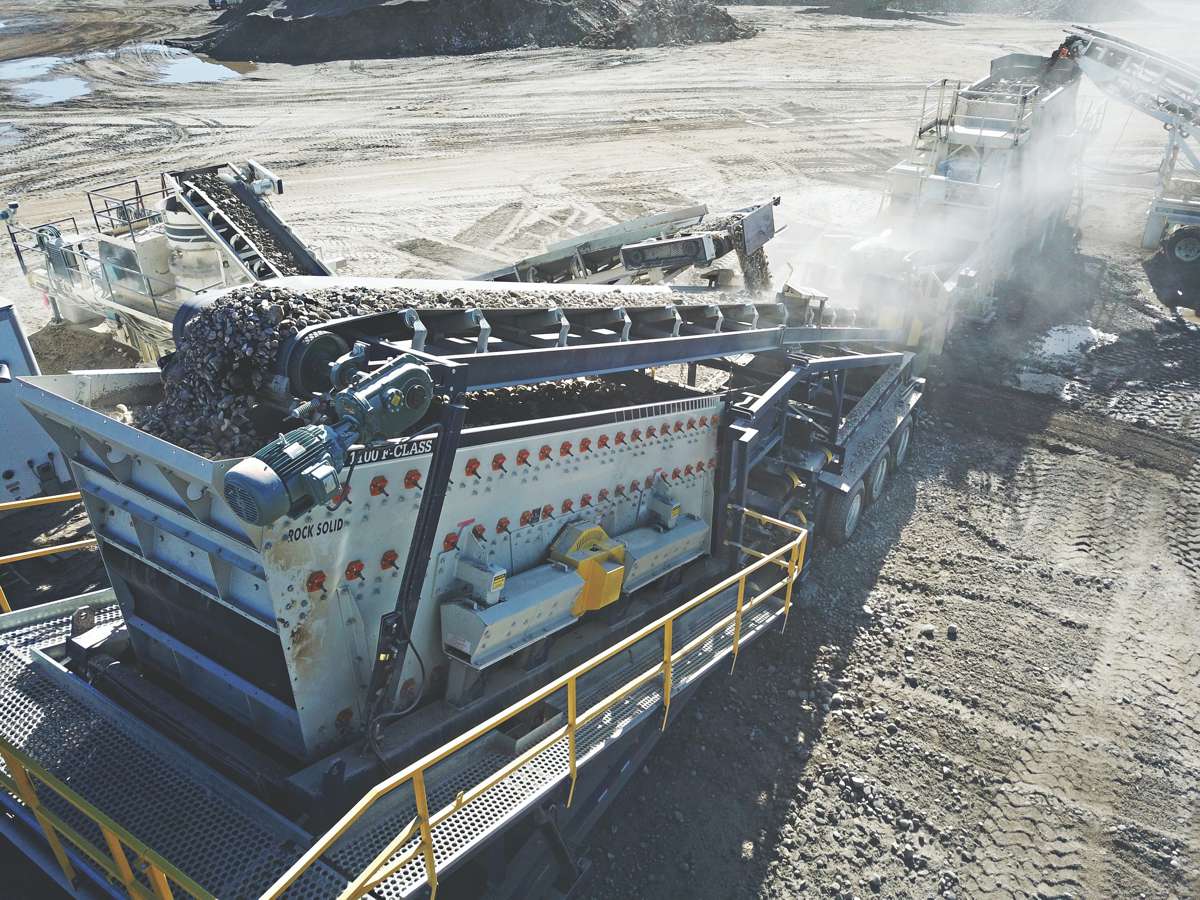Boost production with Eccentric Vibrating Screens and Polyurethane Media
Haver & Boecker Niagara highlights the advantages of pairing eccentric screening technology with polyurethane screen media.
The combination of the eccentric machines like Haver & Boecker Niagara’s Niagara F-Class and Niagara N-Class with polyurethane media such as Ty-Max and Ty-Deck leads to more uptime, fewer screening problems and higher screening efficiency.
“We pride ourselves on providing our customers technology that advances their operations’ productivity and profitability,” said Karen Thompson, president of Haver & Boecker Niagara’s North American and Australian operations. “Though each of these two technologies are highly beneficial on their own, their benefits dramatically increase when combined. The result for our customers is less downtime and better screening.”
Advanced eccentric screening technology implemented by Haver & Boecker Niagara, combined with the benefits of the manufacturer’s polyurethane media reduces pegging and blinding; handles high impacts better; improves screening action and increases screening efficiency; and lessens vibrations transmitted to the structure.
Eccentric screening optimizes vibrating screens for handling heavy-duty applications, such as classifying and scalping. The eccentric shaft design forces the screen body to follow the shaft movement.
While it travels upward, the counterbalance weights move in the opposite direction and create an equal force to that generated by the body. As a result, the forces cancel each other out while generating a consistent positive stroke that minimizes structural vibration and handles material volume spikes without losing momentum.
This leads to the machine transmitting fewer vibrations to the structure and allows for longer component life. Additionally, the design creates a self-cleaning action that reduces blinding and pegging while improving overall screening efficiency.
Haver & Boecker Niagara’s polyurethane media offers the best combination of open area and wear life for both wet and dry applications. It is poured open cast, resulting in 1.5 to 2 times longer wear life than injection-moulded products sold at comparable prices. In addition, open cast polyurethane permanently hardens when cured to maintain its chemical properties to improve wear life.
Injection-moulded screens can soften when the temperature rises during screening, resulting in shorter wear life. Some polyurethane media features tapered openings to reduce the risk of pegging, and the flexibility of the material allows the screen media to resist blinding and pegging.
Operations can choose wear liners for improved screen media protection and even higher performance and longevity from their machines. Liners for vibrating screen cross beams are also available.





















